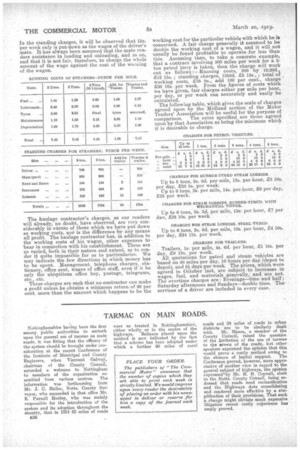TARMAC ON MAIN ROADS.
Page 16

If you've noticed an error in this article please click here to report it so we can fix it.
Nottinghamshire having been the first among public authorities to embark upon the general use of tarmac on main roads, it was fitting that the efficacy of the system should be brought under consideration at the recent Conference of the Institute of Municipal and County Engineers, when Viscount Galway, chairman of the County Council, extended a welcome to Nottingham to members of the organization assembled from various centres. The information was forthcoming from Mr. J. C. Haller, Notts. County Surveyor, who succeeded in that office Mr. E. Purnell Hooley, who was mainly responsible for the introduction of the system and its adoption throughout the country, that in 1914 85 miles of roads
836 were so treated in Nottinghamshire, either wholly or in the centre of the highways. Reliance placed upon the method is now indicated by the fact that a scheme has been adopted under which a further 90 miles of rural roads and 24 miles of roads in urban districts are to be similarly dealt with. Mr. Mason, a member of the County Council, raised the question of the limitation of the use of tarmac to the crown of the roads, but other speakers expressed the opinion that this would prove a costly method owing to
the absence of lataal support. The Conference proved, however, more appreciative of another view in regard to the general subject of highways, the opinion expressedbby Mr. H. H. Copnall, clerk to the Notts. County Council, being endorsed that roads need reclassification and the Highways Acts consolidating and rendered more effective by a simplification of their provisions. That such a change might obviate much expensive litigation recent costly experience has amply proved.






















